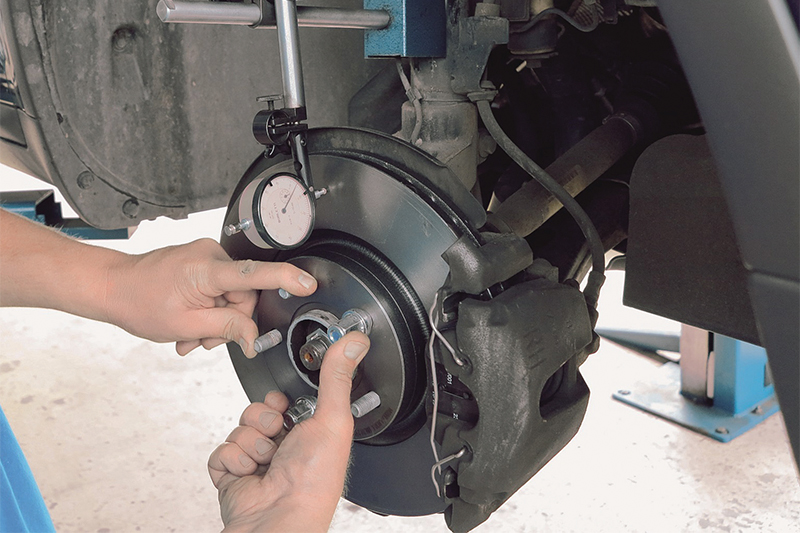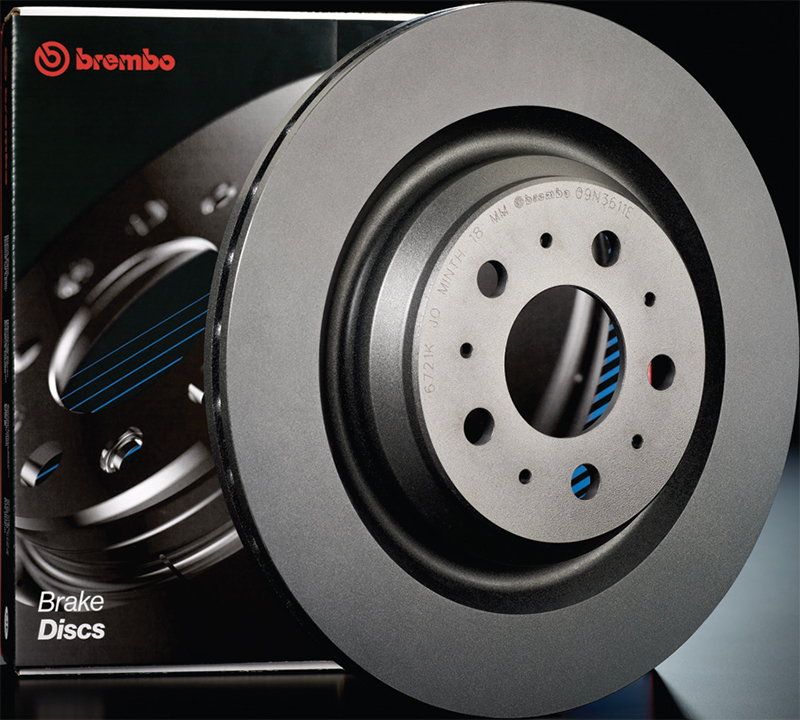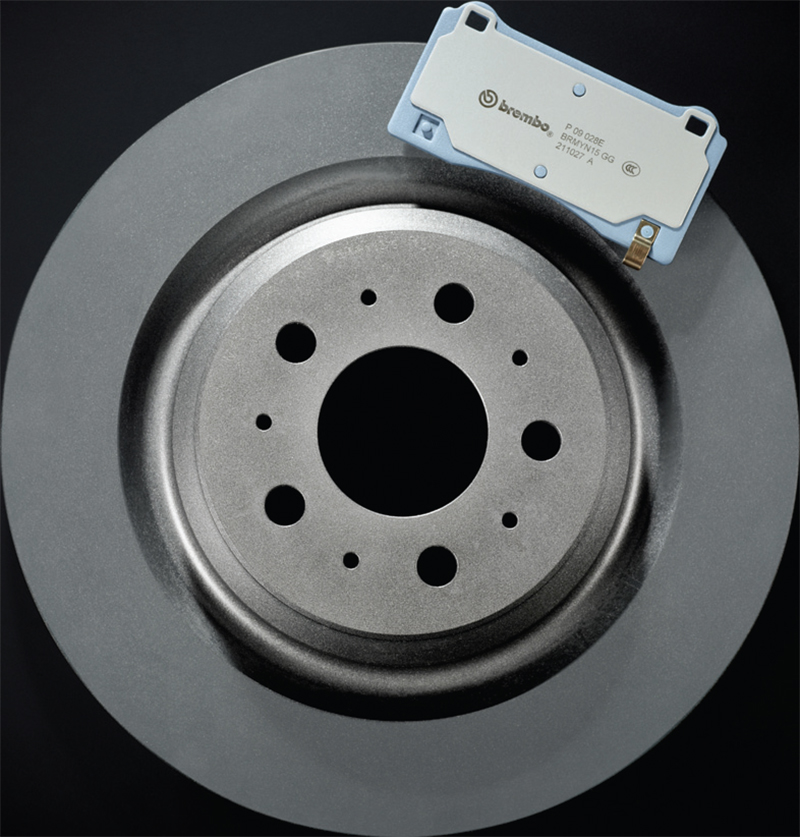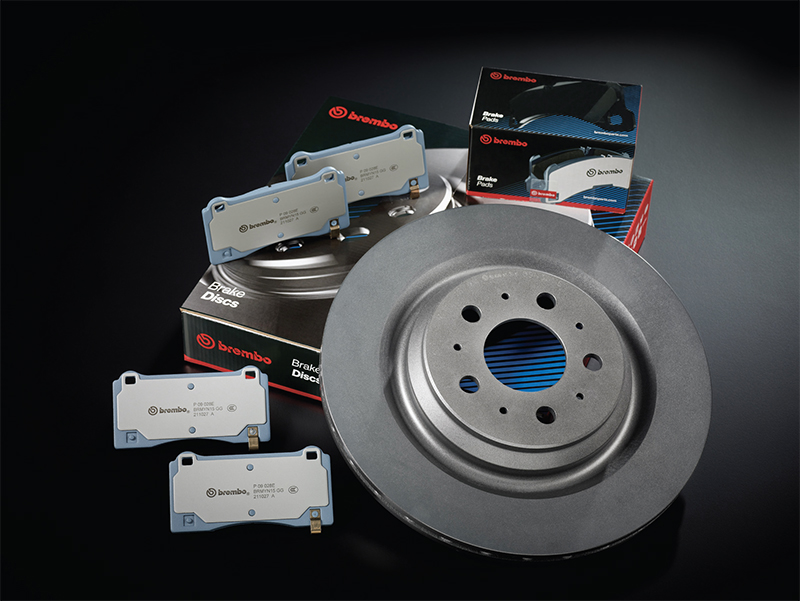
Yes, the rumours are true: EVs need to use the brakes less than ICE vehicles. But does this mean the brakes need less servicing? Well, as Brembo explains, (un)fortunately not, as using the brakes less leaves them open to added corrosion. The Italian manufacturer claims to have the perfect solution for workshops looking to provide customers with a long-lasting fix.
The move towards e-mobility has seen many components within a typical vehicle being overhauled, with many naturally being made obsolete. This is true also for the vehicle’s brake system, where the quest to achieve next generation performance and safety is combined with the requirement to lower environmental impact.

Regenerative and friction braking in EVs
EVs use regenerative braking in addition to traditional friction (hydraulic) braking. As one of the innovations made possible by vehicle electrification, regenerative braking avails of the electric motor to recover a significant amount of the kinetic energy released during braking. This, indeed, is a giant leap forward in terms of sustainability.
Electric vehicles perform regenerative deceleration by operating the electric motor as generator. Even though the recuperation potential is subject to limitations in EVs, much braking will be carried out by regenerative deceleration. Consequently, the standard friction brakes are being used less frequently. The integration of regenerative braking into a vehicle, however, leads to knock-on challenges that need to be overcome. Beneficial as it is, regenerative braking is not enough on its own to stop a vehicle and avoid collisions. This role is only performed by the traditional friction (hydraulic) braking system. All in all, vehicles that use the regenerative braking also have friction brakes to support the regenerative braking when it loses power or not supplying enough power to stop the vehicle.
The presence of the regenerative braking system in EVs results in many of the braking actions being performed by the electric motor itself, which translates into the hydraulic braking system being used less. While this has the benefit of reducing wear of the hydraulic brake components, their lack of action also makes them ripe for dangerous corrosion, which can compromise not just a braking system’s durability but also its performance and safety.
For this reason, the brakes of electric vehicles need to meet a series of crucial requirements: corrosion resistance, silent operation, lightweight design and reduced residual torque.

EV specific brake range
With these challenges particularly in mind, Italian brake manufacturer Brembo has released the Brembo Beyond product line, the company’s replacement range tailored to improve EV driving.
“Brembo Beyond embraces the company’s mission to become a Solution Provider, improving the driving dynamics of the new mobility vehicles, with a specific focus on environmentally friendly solutions,” reveals Siti Abdullah, key account manager at Brembo. “This product family includes the Brembo Beyond EV Kit, which consists of specially coated discs and brake pads tailor- made for the most popular electric cars on the market.”
Directly derived from Brembo’s OE heritage and expertise, the new EV kit brings together modern materials and technologies. “The new components, used together, are quieter and more resistant to oxidation. Furthermore, a special copper-free friction material with a galvanised backing plate reduces both dust and noise when braking,” informs Siti. “This means that they last longer, which brings benefits on two fronts: total cost of ownership and sustainability.”

In the workshop
With a revolution occurring in the automotive industry, Siti is keen to emphasise the need for workshop technicians to anticipate non- traditional challenges. “The braking system of an electric vehicle will have its own peculiarities and characteristics, both in terms of design and maintenance,” she says. “It is therefore advisable for a mechanic to be prepared to recognise these peculiarities for a professional service that is continually updated with the evolution of vehicles.”
- Pads and discs replacement
Due to the regenerative braking system, the replacement of pads and discs in EVs generally takes place at longer intervals. “During regular maintenance checks, pay attention to any signs of oxidation,” tells Siti. “Oxidation is more likely to occur because the brakes are being used less frequently. This is especially pertinent for vehicles operated in more severe climatic conditions.”
- Brake fluid replacement
In EVs, the same replacement intervals which are used in traditional vehicles are generally recommended, i.e. those suggested by the car manufacturer. “From a product point of view, low viscosity fluids are preferable for electric cars,” says Siti. Viscosity is an important factor for the correct operation of the braking system, especially in modern vehicles with anti-locking systems (ABS) and electric systems for traction and control.
“In these systems, the fluid flows through the control mechanisms – which are generally very limited passages – so the liquid must be very fluid because of the need for a precise and immediate transfer.”
- EV brake pads
Due to EVs’ lowered ambient noise, brake noise, vibration and harshness (NVH) is a very important issue. “Due to less frequent use, special attention should be paid to the brake pads and discs to ensure excessive corrosion is avoided,” says Siti. “In addition, high and stable friction coefficients must be guaranteed, even if the brake system has undergone long phases of inactivity.









